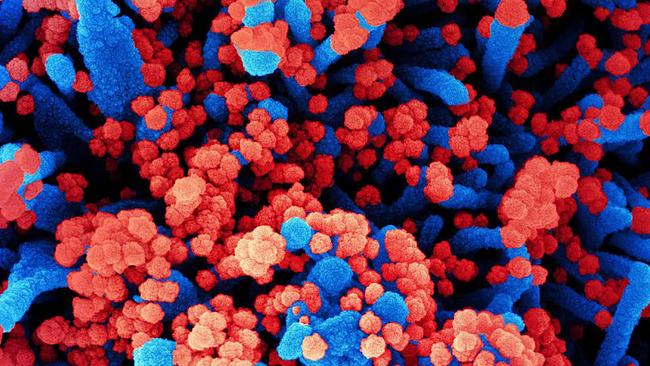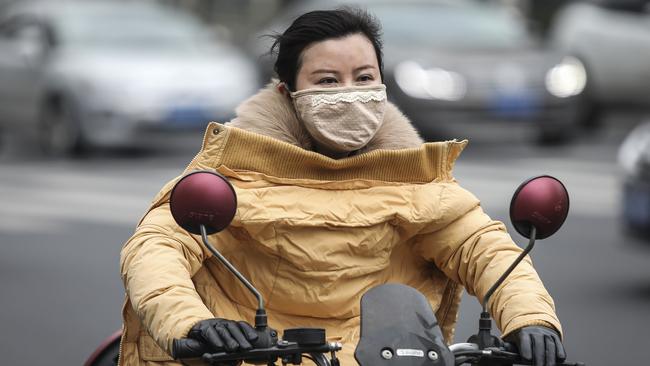Coronavirus strains and mutations explained: What they mean for finding a vaccine
The promise of a vaccine against coronavirus may be within arms reach, but as new strains and mutations continue to spread like wildfire, will we be able to find a cure before it’s too late?
New fears have emerged over coronavirus after Malaysian authorities claimed they had discovered a strain of the deadly bug that is “10 times more infectious”.
The mutation - known as D6146 - was discovered in four cases from two separate COVID-19 clusters in the country.
“It’s found to be 10 times more infectious and is easily spread by an individual ‘super spreader’,” Malaysia’s Director-General of Health, Noor Hisham Abdullah said.
However, the health chief’s claims have raised doubts.
Professor Wang Linfa, Director of the Emerging Infectious Diseases program at Duke-NUS Medical School in Singapore, told The Straits Times that there is “no real scientific data to make the claim that D614G is more transmissible, let alone the tenfold claim”.
But the potential discovery, along with conversations around strains coming out of quarantine hotels across Australia, has raised the question of just how many strains of coronavirus there are, and what they mean for our short and long-term future.
Here is what they could mean for us and our chances of getting a vaccine.
HOW MANY STRAINS OF CORONAVIRUS ARE THERE?
To date, there are six known strains of coronavirus.
The L strain first appeared in Wuhan in December 2019, and is widely considered to be the first strain of coronavirus to appear in humans.
By January, the S strain appeared, followed closely by the V and G strains.
By February, the G strain further mutated, creating strains GR and GH. These two strains are believed to be the most common and widespread strains of the virus to date.
The University of Melbourne’s Doherty Institute is currently carrying out genomic testing on Victorian cases, but the results are yet to be publicly released and it is too early to say if these cases, along with the strains identified in Malaysia and New Zealand this week belong to new strains, or existing strains entering the community for the first time.

WHERE ARE THESE STRAINS FOUND?
Due to a number of major factors including air travel, cases for most of the six strains can be found throughout the world. However, according to recent research undertaken by the University of Bologna, the strains are most commonly concentrated within the following areas and countries:
L strain – Originally found in Wuhan, this strain is now gradually disappearing.
S strain – Europe (notably Spain), United States, Australia. Like the L strain, the S strain is now gradually disappearing.
V strain – Originally found in Wuhan, this strain is also gradually disappearing.
G strain – Europe (notably Italy), China, Australia
GH strain – Europe (notably France, Germany), United States, China
GR strain – Europe (notably Italy), South America, China, Australia

WHICH STRAINS OF CORONAVIRUS ARE IN AUSTRALIA?
The majority of cases seen in Australia during the first wave of coronavirus were believed to originate from the “S” strain, which has now largely disappeared.
But as thousands of Australians returned from overseas, and Victoria’s hotel quarantine management plan failed, the majority of cases in the second wave now stem from “G” and “GR” strains, which were widespread throughout Europe, the United Kingdom and the United States earlier in the year.
HAS THE MALAYSIA STRAIN BEEN FOUND IN AUSTRALIAN CASES?
It is still too early to know.
ARE STRAINS DIFFERENT TO MUTATIONS?
Yes. While different strains can impact things like severity or contagiousness of a virus, mutations occur when the RNA of the virus is transcribed. These mutations can be used to help experts identify clusters of outbreaks.
“You will get some little errors that happen, but they’re not errors that will fundamentally change the virus because they don’t work in the core parts of the virus genome that determine whether it lives or dies or whether it can cause disease or spread. They’re in other parts of the genome, so you can get these small changes which we can pick up in the laboratory but they’re essentially still the same virus,” Professor Catherine Bennett, Chair of Epidemiology at Deakin University says.
“In the simplest sense, mutation is just enough to not change the virus, but to allow us to distinguish different strains in the lab so that we can relate the outbreak cases together.”

SHOULD WE BE WORRIED ABOUT MUTATIONS?
According to Prof Bennett, the answer is both yes and no.
While strains and mutations do have the potential to wreak havoc, they are simply a sign that the virus is still active and being contracted throughout the community, and putting people’s lives at risk. The more strains and mutations there are, the less likely we are to find a successful vaccine.
Ultimately, the greatest danger is the coronavirus itself. So if you are worried about strains and mutations, the best things to do is practice social distancing, wash your hands thoroughly and regularly, wear a mask, adhere to your state health department’s guidelines, and avoid contracting coronavirus.
CAN STRAINS & MUTATIONS ALTER SYMPTOMS OR SEVERITY OF COVID-19?
“That’s the one thing we have to watch out for. You don’t want the genetic changes to actually turn the virus into a more terrible monster than it already is,” Prof Bennett says.
This can happen in two ways, either when a new strain or mutation makes the virus more infectious and easier to pass from one person to another or survive on surfaces, or when a strain or mutation causes a more severe illness.
Since the onset of coronavirus there has been discussion within the scientific community about the severity of strains, but Prof Bennett says that the conclusive evidence isn’t there yet.

WHY IS THE VIRUS MUTATING?
All viruses mutate, and the coronavirus is not unique in this aspect.
WHAT DO THE STRAINS AND MUTATIONS MEAN FOR A VACCINE?
The more strains and mutations of coronavirus that exist, the harder developing a successful vaccine becomes, which is why stabilising the virus and reducing transmission rates is so important.
The short-term risk, Prof Bennett says, is that there will be too many strains to develop an effective vaccine against, while the long-term risk is that the virus continues to mutate after a vaccine is found, and immunity becomes short-lived.
If the latter happens, we could face a future of requiring having annual vaccines like we do with flu shots.
“That’s something we want to try and avoid,” Prof Bennett says.
